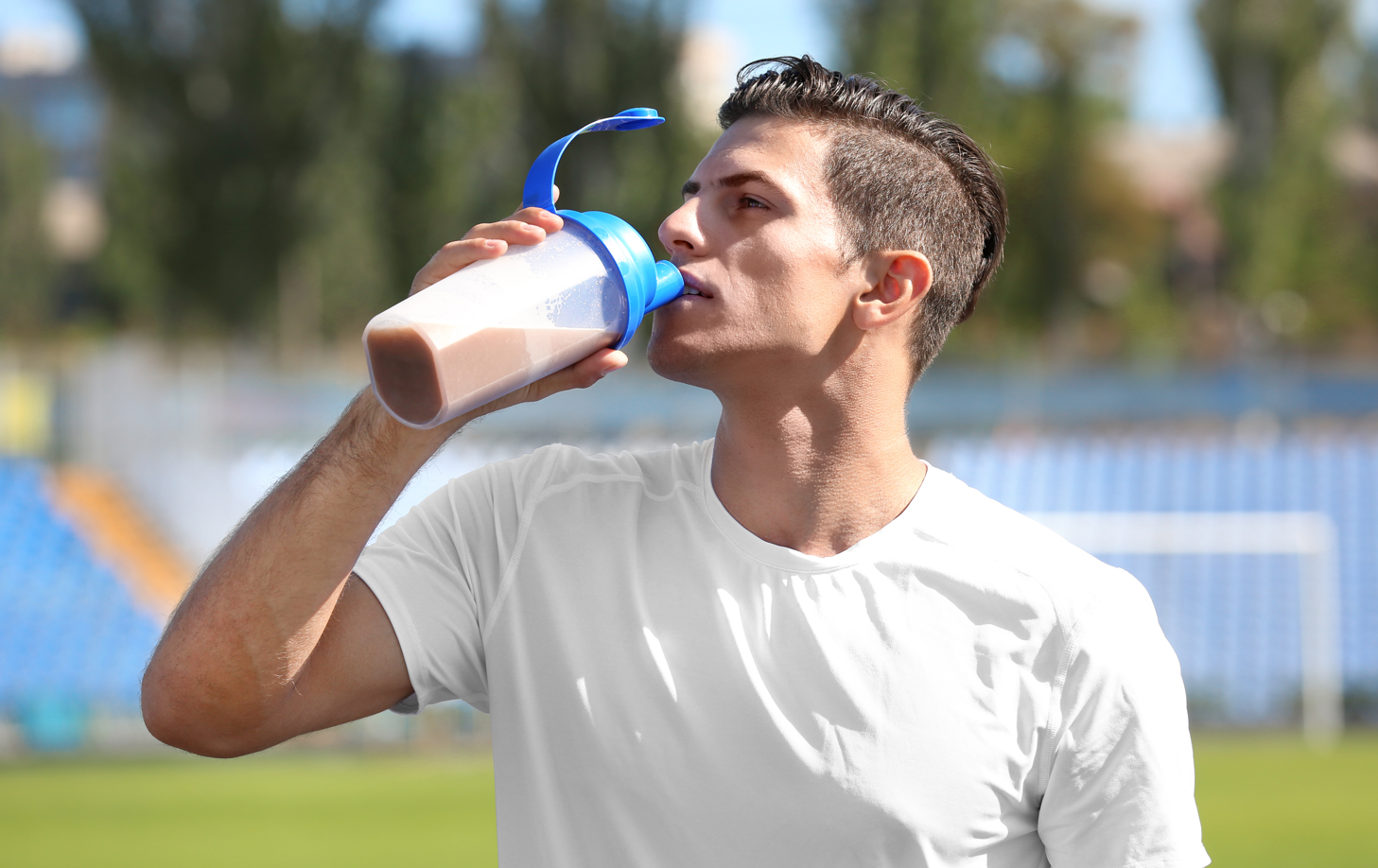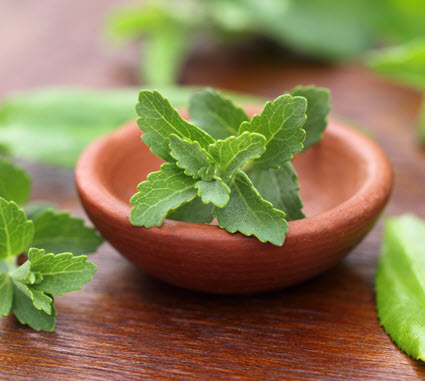
The benefits of a low-sugar diet
The three main macronutrients in the diet are fat, protein and carbohydrates. Carbohydrates are the body’s primary source of energy, and all carbohydrates provide the same number of calories — 4 calories per gram. All foods except fats contain carbohydrates. When it comes to fueling your body, the focus should be on nutrient- and fiber-rich carbohydrates such as whole grains, fruits, vegetables and dairy. When people hear advice to “cut carbs” or go on a “low-carb” diet, they should not eliminate these essential foods which are critical components of a healthy diet.
But there is a carbohydrate we do need to reduce in our diet: added sugar. Here is where it gets a bit confusing for many because there are naturally-occurring sugars, and then there are added-sugars.
Naturally-occurring or intrinsic sugars are found in fruit (fructose) and dairy (lactose), and are not considered added sugars because they occur naturally in these foods. Fruit and vegetable juice from 100% fruits or vegetables is also not considered in the “added sugar” category.
Added sugars (also referred to as extrinsic or “free” sugars) are syrups and other caloric sweeteners used to sweeten food products. You can find added sugars listed as an ingredient in foods as: brown sugar, corn sweetener, corn syrup, dextrose, fructose, glucose, high-fructose corn syrup, honey, invert sugar, lactose, malt syrup, maltose, molasses, raw sugar, sucrose, trehalose and turbinado sugar. The body treats all these added sugars the same way, so even if it sounds natural, like agave, maple syrup or honey, it is still considered an added sugar.
In the United States, finding added sugars on the label is now much easier. The Food and Drug Administration recently issued a ruling that as of July 26, 2018, the Nutrition Facts on labels must show “Includes X g Added Sugars” under “Total Sugars” to help consumers understand how much sugar has been added to the product.1
Reducing dietary sugar
In the U.S., the average intake of added sugars is around 270 calories, or more than 13 percent of calories per day.2 A study in Europe found that added sugars contribute as much as 11% of total energy intake in adults and represent a higher proportion of children’s energy intake (up to 17%).3 Additionally, in China there is a growing concern about an increase in the consumption of sugar containing foods.4
The rise in obesity, particularly childhood obesity, has prompted many public health organizations to set new guidelines to help reduce added sugars in the diet. Excess added sugar intake also increases the risk for cardiovascular disease, hypertension, obesity-related cancers, diabetes and dental cavities.
The World Health Organization (WHO) recommends adults and children reduce their daily intake of added sugars to less than 10% of their total energy intake, or about 12 teaspoons.5 A further reduction to below 5%, or roughly 25 grams (6 teaspoons), per day would provide additional health benefits.
The 2015-2020 Dietary Guidelines for Americans recommends limiting calories from added sugars to no more than 10% each day for a 2,000-calorie diet.2
The United Kingdom’s Public Health England (PHE) also adopted a guideline in 2015 to restrict free sugars consumption to less than 5% of the total energy intake, based on a comprehensive review on carbohydrates and health by the Scientific Advisory Committee on Nutrition (SACN).6 Current intakes of non-milk extrinsic sugars (NMES) in the U.K. exceed these recommendations, and are highest for children aged 4 to 10 years (13.4% of food energy) and 11 to 18 years (15.2% of food energy).7
Additionally, the American Heart Association recommends limiting added sugars to no more than half of your daily discretionary calories allowance.8

Women
No more than 100 calories per day, or about 6 teaspoons of sugar.

Men
Approximately 150 calories per day, or about 9 teaspoons.

Children
≤25 g (100 cal or ≈6 teaspoons) of added sugars per/day; avoid added sugars for children <2 years of age.
Sugar-sweetened beverages make up almost half (47%) of U.S. consumers added sugar intake.2 This includes soft drinks, fruit drinks, sweetened coffee and tea, energy drinks, alcoholic beverages and flavored waters. Snacks and sweets, including grain-based desserts, dairy desserts, candies, sugars, jams, syrups and sweet toppings are other major sources.
Reduce sugar intake with zero-calorie stevia
Given that sugar-sweetened beverages account for the majority of added sugar intake, having a natural, zero-calorie sweetener option such as stevia can help overcome potential consumer concerns about artificial sweeteners. Stevia does not fit in either of the current sweetener models because stevia is neither like sugar — as it has zero calories — nor an artificial sweetener, as it is a plant extract.
Stevia is the only major global, commercially-available, naturally-sourced, zero-calorie sweetener that can be used by the whole family. Stevia is safe for people with diabetes because it does not contain any calories or carbohydrates and therefore does not affect blood glucose or insulin levels. Stevia is also safe for children and pregnant or nursing mothers.
In the grocery store, stevia can be found in products including soft drinks, yogurts, salad dressings, fruit spreads, frozen desserts and baked goods. Stevia can be labeled as stevia, stevia extract, purified stevia leaf extracts, high purity stevia or rebiana in the ingredient listing, but know that it’s all the same.
Stevia can also be found as a tabletop sweetener, usually in the baking section, next to sugar. Since stevia leaf extract is so much sweeter than sugar, it is not a one-for-one substitution when using tabletop stevia in recipes. One packet of stevia can replace two teaspoons of sugar. If a recipe calls for one cup of sugar, you may need only ¼ cup or less of tabletop stevia to get the same level of sweetness.
Plant-based, zero-calorie stevia can be part of a well-balanced diet to help reduce added sugar intake without sacrificing taste. Look for stevia-sweetened foods and beverages in your local grocery store and try using stevia in place of other sweeteners in our recipes section.
Stevia provides a natural-origin way to cut calories without having to sacrifice taste
Stevia, low-sugar diets, appetite and weight management
Worldwide obesity rates have nearly doubled since the 1980s.
According to a New England Journal of Medicine study from the Global Burden of Disease 2015 Obesity Collaborators, it is estimated that 107.7 million children and 603.7 million adults were obese worldwide. The overall prevalence of obesity was 5.0% among children and 12.0% among adults. This equates to one out of every 10 people worldwide being obese.1 Being overweight or obese is a risk factor for a number of chronic diseases, including cardiovascular disease, diabetes mellitus, chronic kidney disease, many cancers and various musculoskeletal disorders.2 The researchers noted that in 2015, being overweight or obese contributed to 4 million deaths, with cardiovascular disease accounting for 41% of those deaths, followed by diabetes.
The cause of obesity around the globe is quite complex and includes factors such as a decrease in physical activity due to increased sedentary time and increased intake of energy-dense foods that are high in fat and added sugars. Importantly, added sugars include a whole host of sweeteners with calories from sugar and high fructose corn syrup to agave nectar and maple syrup. The distinction is that added sugars are those added to foods or beverages when they are processed or prepared, and therefore, do not include naturally occurring sugars such as those in milk and fruits.
Consumption of sugar varies considerably from country to country. The United States is the world’s largest consumer of sugar; the average American consumes 126.4 grams of sugar daily or the equivalent of 31.6 teaspoons.3
Among the many strategies to consider in reducing sugar is the use of non-nutritive sweeteners, particularly stevia.
For people trying to manage their weight, stevia provides a natural-origin way to cut calories without having to sacrifice taste. Replacing just 25 grams (about six teaspoons) of nutritive sweeteners in foods and beverages can provide a 100-calorie reduction. While this may seem relatively insignificant, these small changes do add up over time when done on a daily basis.
Low-sugar diet and weight management research
Replacing sugar with non-nutritive sweeteners can have a positive impact on reducing overall calorie intake and body weight in both children and adults, according to researchers from the University of Bristol.6 Additionally, the preponderance of evidence from all human randomized controlled trials indicated that non-nutritive sweeteners do not increase energy intake or body weight when compared to caloric or non-caloric (e.g., water) control conditions.
Another study published in the American Journal of Clinical Nutrition conducted a meta-analysis of 15 randomized controlled trials (RCT) and nine prospective cohort studies to examine the relationship between low-calorie sweeteners (LCS) and body weight and composition. Results showed that in the RCT studies, LCS significantly reduced body weight, body mass index, fat mass and waist circumference. In the prospective cohort studies, LCS intake was not associated with body weight or fat mass, but was significantly associated with slightly higher BMI. From this analysis, the authors concluded that substituting LCS for higher-calorie options results in modest weight loss and may be a useful tool in weight maintenance or loss.7

Children and the case for sugar reduction
In 2016, the WHO estimated that 41 million children under the age of five were overweight. Overweight and obese children are more prone to stay obese into adulthood and have a higher risk of developing diabetes and cardiovascular diseases at a younger age.4 Many factors, including genetics, diet, physical activity and environmental cues are, implicated in the obesity epidemic among children.
Children, like adults, often eat and drink more calories than recommended. A report issued by the United States Centers for Disease Control and Prevention (CDC) found boys consume 16.3% of their daily calories from added sugars and girls get 15.5%.5
For children, almost half of these added sugar calories come from beverages, according to the most recent analysis provided to the 2015 U.S. Dietary Guidelines Advisory Committee (DGAC, 2015).6 Studies to date have shown replacing sugar-sweetened beverages with beverages sweetened with non-caloric sweeteners results in a reduction in energy intake and modest weight loss, even if some calorie compensation occurs.7
High-purity stevia extract is a useful tool in helping to reduce calories and sugar intake. Stevia alone cannot solve all weight management challenges, but stevia is one tool in the toolbox of better health. You can cut unwanted calories by choosing packaged foods and beverages containing stevia, or in your own kitchen, you can use it to replace or reduce other kinds of caloric sweeteners in your family’s favorite recipes.
Appetite and satiety research
In another study, 19 healthy weight and 12 obese subjects were fed preloads containing stevia (290cal), aspartame (290cal) and sucrose (492cal) before a lunch and dinner meal on three separate food test days. Hunger and satiety levels were noted before and after mealtime and every hour throughout the afternoon. Participants also provided blood samples immediately before and 20 minutes after the lunch preload. Results showed that despite the difference in calories in the preload, the participants did not compensate by eating more at either lunch or dinner and reported similar levels of satiety when they consumed stevia or aspartame compared to sucrose. Additionally, stevia preloads reduced postprandial glucose and insulin levels, suggesting stevia may be beneficial to glucose regulation.8
Research suggests that while some people may compensate for any calories saved by using a non-nutritive sweetener over sugar, they do not overindulge. A study published in the March 2017 issue of the International Journal of Obesity compared the impact of consuming non-nutritive sweetened beverages (both artificial and natural) versus sugar-containing drinks on overall energy intake, blood glucose and insulin responses.9 The 30 male subjects were given one of four test beverages mid-morning (including sucrose, aspartame, stevia and monk fruit) after a standardized breakfast, and then were allowed to eat as much as they desired at lunch. The researchers found that participants who received the non-nutritive sweetened beverage compensated for any of the calories saved at subsequent meals, leading to no difference in total calorie intake between the treatments. The researchers did report that the sucrose-sweetened beverage led to significant spikes in blood glucose and insulin responses compared to the three non-nutritive sweetened beverages.
While the participants who received the non-nutritive sweetened beverages felt slightly hungrier and ate more calories at the next meal, they did not overindulge. It is also important to note that this was a relatively small study (30 people), and conducted over four test days. Overall energy intake was partially determined by self-reporting of participants keeping a food diary, which can be imprecise.
The concern is not that non-nutritive sweeteners cause an increased appetite which can lead to overeating, but rather that some people may have a natural instinct to replace the calories saved with something else. The key to successfully reducing weight by replacing regularly sweetened foods and beverages with non-nutritive sweetened versions is to be conscious of not compensating for the calories saved by overindulging in other foods.
Replacing sugar with reduced-calorie, reduced-sugar foods made with sweeteners like stevia has the ability to influence weight management. When used correctly, non-nutritive sweeteners can help achieve personal as well as public health goals to reduce calories and sugar intake and improve overall health.
Stevia is now available as an ingredient in over 40,000 food and beverage products around the world, including teas, soft drinks, juices, yogurt, soy milk, baked goods, granola bars, alcoholic beverages, chewing gum, cereal, salad dressings, confections and as a tabletop sweetener.
Because food and labeling policies vary greatly around the world, stevia may be listed differently on nutrition labels depending on where you live. On nutrition labels, look for “stevia, stevia extract, steviol glycosides, stevia leaf extract, Reb M and other variations.

Stevia and metabolism
Steviol glycosides are not absorbed intact. Once consumed, they pass through the upper gastrointestinal tract, including the stomach and small intestines, fully intact. Once steviol glycosides reach the large intestine, colonic bacteria remove all of the glucose units, leaving only the backbone, steviol. In humans, steviol is absorbed into the body, quickly modified in the liver, and excreted in the urine as steviol glucuronide.1
Research has shown that there is no accumulation of stevia (or any by-product of stevia) in the body during metabolism.2,3 Recent data indicates both major and minor SGs share the same metabolic fate.4
This was further confirmed in a Nutrition Reviews article looking at the biological fate of various low-calorie sweeteners.5 The research shows all of the low-calorie sweeteners are very efficiently metabolized and quickly excreted by the body. While bacteria in the colon does play a role in stevia metabolism, there is no evidence that the amount of steviol glycosides that people consume cause any adverse effects on the gut microflora or gut function of animals fed very high amounts of steviol glycoside during safety testing.
It is a result of this essentially poor absorption in the digestive tract, which ultimately contributes to the fact that stevia has zero calories and does not raise blood glucose or insulin levels when digested. It also helps to explain why stevia leaf extract (high-purity steviol glycosides) is safe for everyone to use, including pregnant women and children.
The naturality of stevia has been questioned in relation to its processing, with some suggesting that compounds not of the plant are formed as a result of the purification. However, research published in the International Journal of Food Science and Technology confirmed that steviol glycosides are not altered during the extraction and purification process to make high-purity stevia extract.6 This was the first study to systematically look at whether the chemical structure or presence of the original steviol glycosides from the stevia plant are affected or modified by the typical commercial extraction and purification processes used to obtain high-purity stevia sweeteners.
The chemical structure of steviol glycosides
There are multiple steviol glycosides that have now been approved for use, including those listed in the table below. Note the formulas and molecular weights vary, as does the conversion factor — this factor allows for the calculation of “steviol equivalents.” Notably, global regulatory agencies have created maximum use limits in their respective safety assessments, which are expressed as steviol equivalents, to account for the varying chemical structures of the steviol glycosides approved for use. Through the use of this conversion factor, the limits are adjusted accordingly to reflect the molecular weight of each given steviol glycoside.
| Trivial name | Formula | MW (g/mol) |
Conversion factor X |
Steviol |
C20H30O3 |
318.45 |
1.00 |
Stevioside |
C38H60O18 |
804.87 |
0.40 |
Rebaudioside A |
C44H70O23 |
967.01 |
0.33 |
Rebaudioside C |
C44H70O22 |
951.01 |
0.34 |
Dulcoside A |
C38H60O 17 |
788.17 |
0.40 |
Rubusoside |
C32H50O 13 |
642.73 |
0.50 |
Steviolbioside |
C32H50O13 |
642.73 |
0.50 |
Rebaudioside D |
C50H80O28 |
804.87 |
0.40 |
Rebaudioside E |
C44H70O23 |
967.01 |
0.33 |
Rebaudioside F |
C43H68O22 |
936.99 |
0.34 |
Other stevia science and research

Stevia is safe

2022 Sugar Reduction Life Cycle Assessment

What is Stevia?
Connect with PureCircle™ by Ingredion
Interested in learning more about PureCircleTM, stevia and the latest stevia leaf ingredients? Please contact us to help inspire your next sweet creation.
References
Diet & Reducing Sugar:
1 - Food and Drug Administration. Food Labeling: Revision of the Nutrition and Supplement Facts Labels https://www.federalregister.gov/d/2016-11867/p-89 and Added Sugars guidance https://www.fda.gov/Food/GuidanceRegulation/GuidanceDocumentsRegulatoryInformation/LabelingNutrition/ucm385663.htm
2 - Dietary Guidelines for Americans 2015- 2018, 8th edition, Added Sugars page 54: https://health.gov/dietaryguidelines/2015/resources/2015-2020_Dietary_Guidelines.pdf
3 - Azaïs-Braesco V, et al, A review of total and added sugar intakes and dietary sources in Europe, Nutr J. 2017 Jan 21;16(1):6. doi: 10.1186/s12937-016-0225-2.
4 - Liu S, et al. Consumption status and trend of added sugar containing food among Chinese from 2002 to 2012. Wei Sheng Yan Jiu. 2016 May;45(3):398-401 [Abstract].
5 - World Health Organization Guideline: Sugars Intake for Adults and Children http://www.who.int/nutrition/publications/guidelines/sugars_intake/en/; March 2015
6 - SACN (Scientific Advisory Committee on Nutrition) (2015) Carbohydrates and Health. Available at: www.gov.uk/government/publications/sacn-carbohydrates-and-health-report
7 - Bates B, Cox L, Nicolson S et al. National Diet and Nutrition Survey: Results from Years 5 and 6 (combined) of the Rolling Programme (2012/13–2013/14). (edPublic Health England and The Food Standards Agency). PHE Publications gateway number: 2016248. London: PHE, 2016. https://www.gov.uk/government/uploads/system/uploads/attachment_data/file/551352/NDNS_Y5_6_UK_Main_Text.pdf
8 - American Heart Association Sugar 101, http://www.heart.org/HEARTORG/HealthyLiving/HealthyEating/Nutrition/Sugar-101_UCM_306024_Article.jsp#.WIdvqBsrI2x.
Weight Management:
9 - Health Effects of Overweight and Obesity in 195 Countries over 25 Years The GBD 2015 Obesity Collaborators N Engl J Med 2017; 377:13-27July 6, 2017
10 - Centers for Disease Control and Prevention. Causes and consequences of obesity: what causes overweight and obesity? http://www.cdc.gov/obesity/adult/causes/index.html. Accessed October 15, 2014
11 - http://www.worldatlas.com/articles/top-sugar-consuming-nations-in-the-world.html. Accessed September 12 2017
12 - World Health Organization Guideline: Sugars Intake for Adults and Children http://www.who.int/nutrition/publications/guidelines/sugars_intake/en/; March 2015
13 - U.S. Department of Agriculture and U.S. Department of Health and Human Services. Dietary Guidelines for Americans 2015–2020 8th Edition: https://health.gov/dietaryguidelines/2015/guidelines/
14 - Rogers PJ, et al. (2016). Does low-energy sweetener consumption affect energy intake and body weight? A systematic review, including meta-analyses, of the evidence from human and animal studies. International Journal of Obesity. DOI 10.1038/ijo.2015.177.
15 - Miller P, Perez V. Low-calorie sweeteners and body weight and composition: a meta-analysis of randomized controlled trials and prospective cohort studies. Am J Clin Nutr. 2014; 100(3):765-777.
16 - Anton SD, Martin CK, Han H, Coulon S, Cefalu WT, Geiselman P, Williamson DA .Effects of stevia, aspartame, and sucrose on food intake, satiety, and postprandial glucose and insulin levels. Appetite. 2010; 55(1):37-43
17 - S L Tey, N B Salleh, J Henry, C G Forde, Effects of aspartame-, monk fruit-, Stevia-, and sucrose-sweetened beverages on postprandial glucose, insulin and energy intake Int J Obes (Lond). 2017 Mar;41(3):450-457
18 - Mintel Global New Products Database (GNPD) September 2017.
Metabolism:
19 - Gardana C, Simonetti, Canzi E et al. Metabolism of Stevioside and Rebaudioside A from Stevia Rebaudiana extracts by Human Microflora, J. Ag. Food Chem, 51(2):6618-6622, 2003.
20 - European Food Safety Authority, Panel on Food Additives and Nutrient Sources added to Food. Scientific opinion on the safety of steviol glycosides for the proposed uses as a food additive. EFSA Journal, 8(4):1537. 2010. [3. Biological and toxicological data (pg 20); 3.1. Absorption, distribution, metabolism and excretion (pg 20); 3.1.1. In vitro studies (pg 20);3.1.2. In vivo studies (pg 20)]. www.efsa.europa.eu/en/efsajournal/pub/1537.htm
21 - European Commission Regulation (EU) No 1131/2011 of 11 November 2011 amending Annex II to Regulation (EC) No 1333/2008 of the European Parliament and of the Council with regard to steviol glycosides. Official Journal of the European Union. December 11, 2011. Retrieved June 13, 2013: http://eurlex.europa.eu/LexUriServ/LexUriServ.do?uri=OJ:L:2011:295:0205:0211:EN:PDF
22 - Purkayastha S et al. Steviol glycosides in purified stevia leaf extract sharing the same metabolic fate. Regulatory Toxicology and Pharmacology 77 (2016) 125e133
23 - Magnuson, BA, et al. Biological fate of low-calorie sweeteners. Nutrition Reviews, Volume 74, Issue 11, 1 November 2016, Pages 670–689, https://doi.org/10.1093/nutrit/nuw032
24 - Oehme, A., Wüst, M. and Wölwer-Rieck, U. (2017), Steviol glycosides are not altered during commercial extraction and purification processes. Int J Food Sci Technol. doi:10.1111/ijfs.13494
